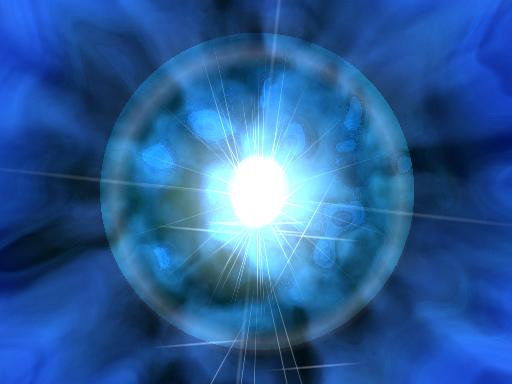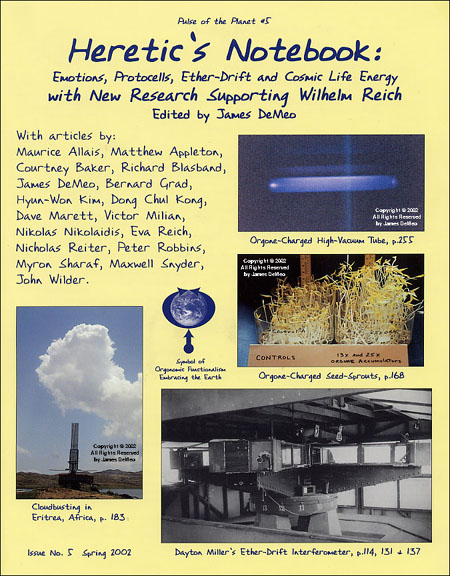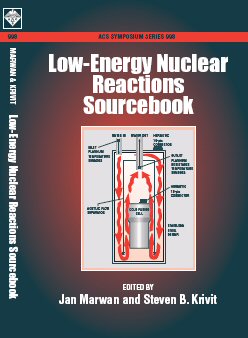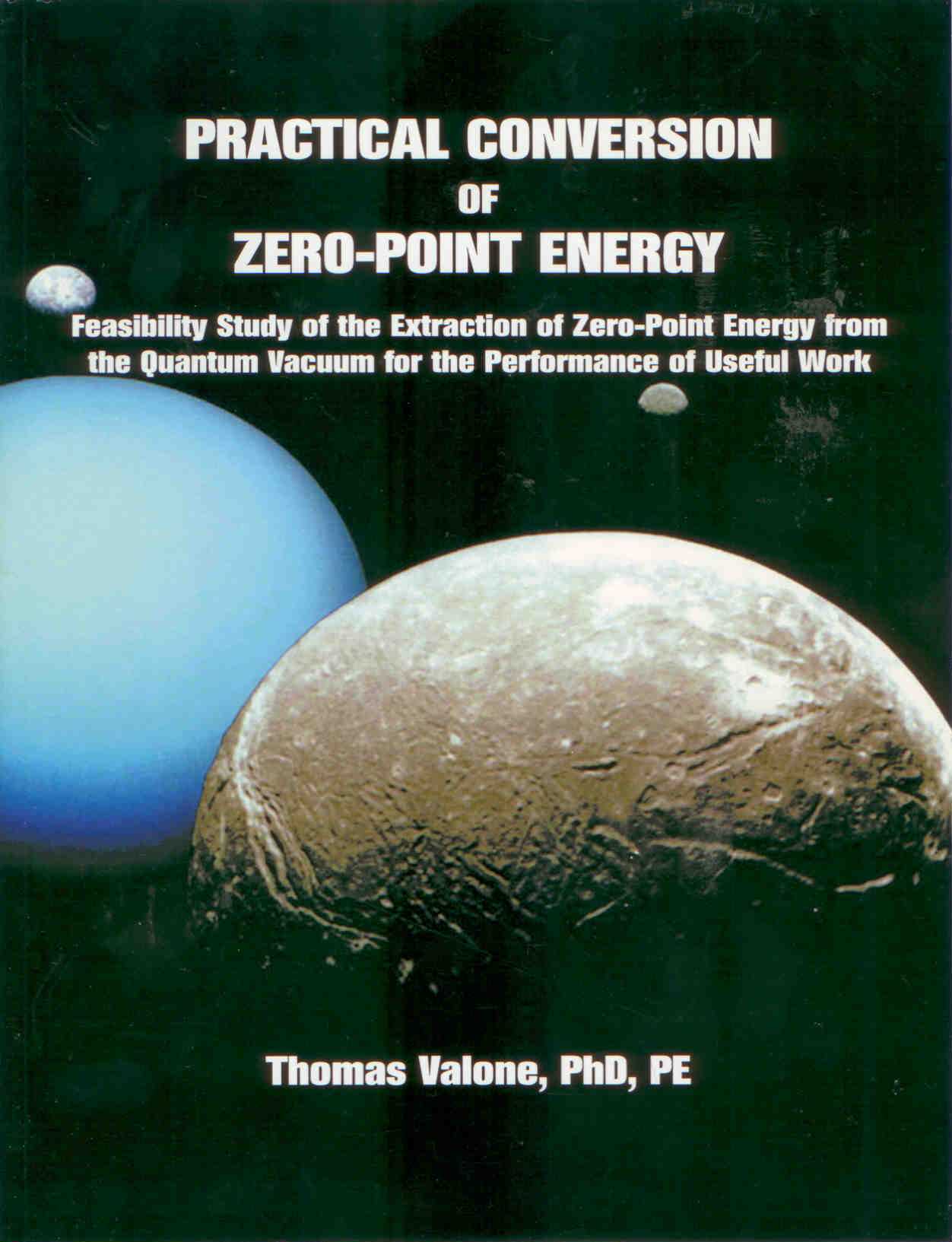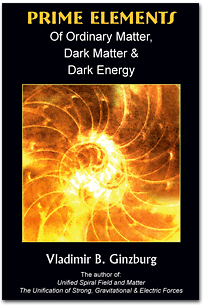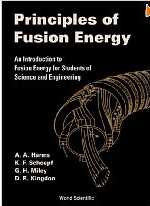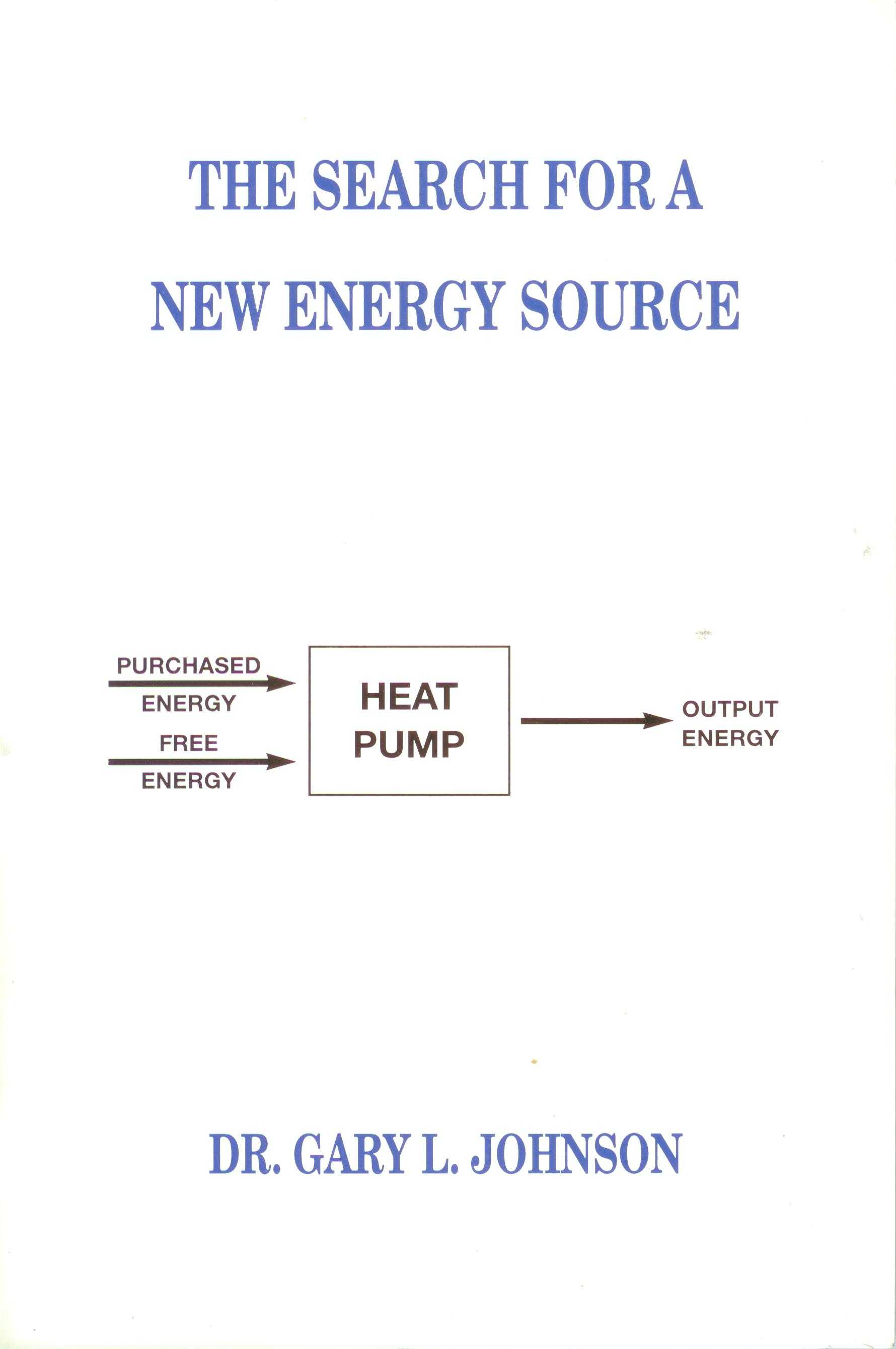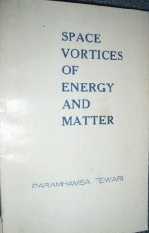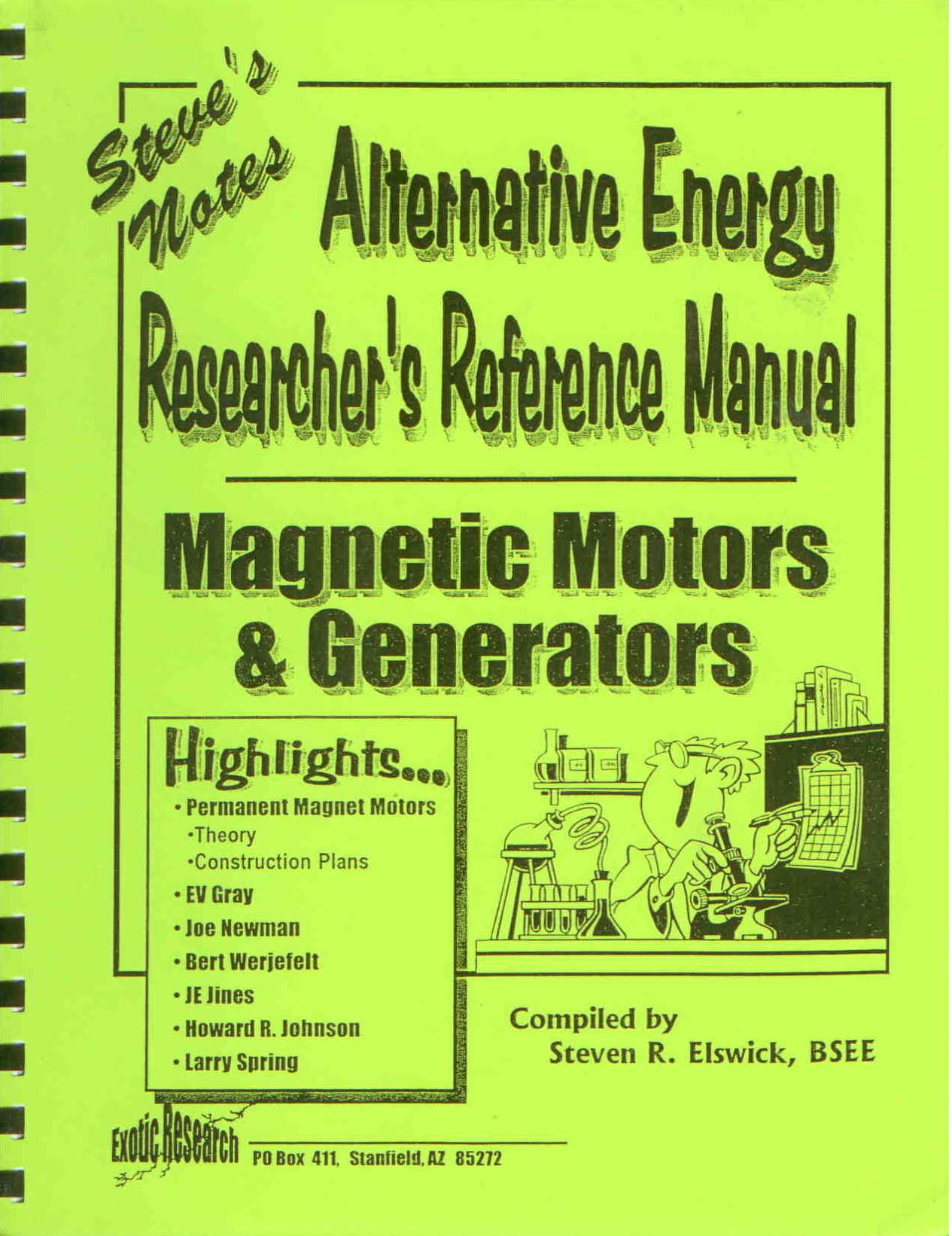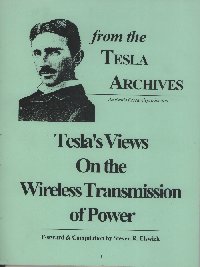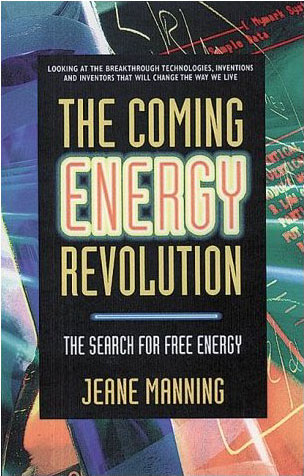(See right-hand panel for a full list of scientists, papers, and books)
Pages: 272
Publisher: Natural Energy Works
Year: 2002
ISBN: 0962185582
ISBN: 978-0962185588
Websites: www.orgonelab.org www.saharasia.org www.naturalenergyworks.net
Pages: 90
Year: 1998
ISBN: 1890139017
ISBN: 978-1890139018
ISBN: B001BBQXZI
ISBN: B000GQUGW0
Websites: re-doingphysics.blogspot.com
View count: 1
Publisher: People's Network, Inc. (Cedar Key, FL)
Year: 1990
Pages: 300
Publisher: American Chemical Society
Year: 2010
ISBN: 0841224544
ISBN: 978-0841224544
In 1989, the subject was announced with great fanfare, to the chagrin of many people in the science community. However, the significant claim of its discoverers, Martin Fleischmann and Stanley Pons, excess heat without harmful neutron emissions or strong gamma radiation, involving electrochemical cells using heavy water and palladium, has held strong.
In recent years, LENR, within the field of condensed matter nuclear science, has begun to attract widespread attention and is regarded as a potential alternative and renewable energy source to confront climate change and energy scarcity. The aim of the research is to collect experimental findings for LENR in order to present reasonable explanations and a conclusive theoretical and practical working model.
The goal of the field is directed toward the fabrication of LENR devices with unique commercial potential demonstrating an alternative energy source that does not produce greenhouse gases, long-lived radiation or strong prompt radiation. The idea of LENR has led to endless discussions about the kinetic impossibility of intense nuclear reactions with high coulomb barrier potential. However, recent theoretical work may soon shed light on this mystery.
Understanding this process is one of the most challenging and perhaps important issues in the scientific world. This book includes previously unpublished studies, new and controversial theories to approach LENR with access to new sources and experimental results. The book offers insight into this controversial subject and will help readers re-evaluate their perspective on LENR as a possible alternative energy source.
Pages: 420
Year: 2008
ISBN: 0841269661
ISBN: 978-0841269668
Websites: newenergytimes.com/Books/2008-LENR-Sourcebook/LENR-Sourcebook.htm www.newenergytimes.com
In 1989, the subject was announced with great fanfare, to the chagrin of many people in the science community. However, the significant claim of its discoverers, Martin Fleischmann and Stanley Pons, excess heat without harmful neutron emissions or strong gamma radiation, involving electrochemical cells using heavy water and palladium, has held strong.
In recent years, LENR, within the field of condensed matter nuclear science, has begun to attract widespread attention and is regarded as a potential alternative and renewable energy source to confront climate change and energy scarcity. The aim of the research is to collect experimental findings for LENR in order to present reasonable explanations and a conclusive theoretical and practical working model.
The goal of the field is directed toward the fabrication of LENR devices with unique commercial potential demonstrating an alternative energy source that does not produce greenhouse gases, long-lived radiation or strong prompt radiation. The idea of LENR has led to endless discussions about the kinetic impossibility of intense nuclear reactions with high coulomb barrier potential. However, recent theoretical work may soon shed light on this mystery.
Understanding this process is one of the most challenging and perhaps important issues in the scientific world. This book includes previously unpublished studies, new and controversial theories to approach LENR with access to new sources and experimental results. The book offers insight into this controversial subject and will help readers re-evaluate their perspective on LENR for a possible alternative energy source.
Reviews:
- Release of Low-Energy Nuclear Reactions Sourcebook and More Thoughts on ICCF1 by Scott Chubb, Infinite Energy, V82, p. 50 (Nov/Dec 2008).
- CMNS/LENR Update, August 18, 2008
Publisher: The Planetary Association for Clean Energy
Year: 1990
ISBN: 0919969224
ISBN: 978-0919969223
Pages: 71
Publisher: A. H. Winterflood
Year: 1984
ISBN: 0950900613
ISBN: 978-0950900612
View count: 1
Pages: 91
Publisher: Integrity Research Instititue
Year: 2005 3rd ed
ISBN: 0964107082
ISBN: 978-0964107083
Websites: www.integrity-research.org
The authoritative guide to the latest developments, tools, and physics behind the only inexhaustible source of energy for the future. Revised edition of a year-long "Feasibility Study of the Extraction of Zero-Point Energy from the Quantum Vacuum for the Performance of Useful Work." Profusely illustrated and professionally researched with almost 300 references by a noted expert in the science of zero-point energy. - Amazon
This revised edition offers proof that zero-point energy exists and proposes the many avenues for its application to solve the energy crisis. - Infinite Energy
View count: 1
The main information on this web site has been gathered together into a standard book format. You can download the entire set of information, including the patents, using this link Book Release 7.5. The document contains over 1,850 pages and has a file size of some 22 Mb which means that it will take some time to download. It is also possible to use a background download from MegaUpload with this Link. Alternatively, you can pick individual chapters as you wish. May I suggest that you store anything you download on your local drive as web sites do not remain in place for ever.
Chapter 1 Magnet Power: Introduction, Contents, Overview, COP, Wang Shum Ho magnet motor, Bedini magnet motor, Ecklin-Brown magnetic generator, the Phi Transformer, Howard Johnson magnet motor, Carousel magnet motor, Robert Tracy magnet motor, Ben Teal electromagnetic motor, Jines magnet motor, Invention Intelligence magnet motor, Stephen Kundel's magnet motor, Charles Flynn's magnet motor, the Asymmetrical magnet motor and Lines of Magnetic Force. size 648 Kb, 13 Dec 2008 HTML
Chapter 2 Moving Pulsed Systems: The Adams motor, Harold Aspden's modifications of the Adams motor, Teruo Kawai's motor, self-powered 800 watt generator, the Muller motor, the RotoVerter, Phil Wood's energy pick-up, Phil Wood's DC motor RotoVerter modification, the David Kousoulides energy pick-up, thyristor testing circuit and alternator design details from Prof. Kevin Sullivan. size 815 Kb, 5 Sept 2008 HTML
Chapter 3 Motionless Pulsed Systems: Graham Gunderson's Solid-state Electric Generator, Charles Flynn's magnetic power enhancement system, Tom Bearden's Motionless Electromagnetic Generator, Dave Lawton's assymetric MEG, Valeri Ivanov's Motionless Generator, Floyd Sweet's VTA, Dan Davidson's acoustic generator, the Pavel Imris optical amplifier, Michael Ognyanov's self-powered power pack, the Meyer-Mace Isotopic Generator, the Colman/Seddon-Gilliespie generator and Hans Coler's passive device. size 202 Kb, 27 Nov 2008 HTML
Chapter 4 Gravitational Pulsed Systems: Chas Campbell's pulsed flywheel, John Bedini's pulsed flywheel, the water-jet generator, Johann Bessler's gravity wheel, the Dale Simpson gravity wheel, the Veljko Milkovic pendulum/lever system, the Dale Simpson hinged-plate system and the Murilo Luciano gravity chain. size 300 Kb, 4 Nov 2008 HTML
Chapter 5 Energy-Tapping Pulsed Systems: Frank Prentice's electrical power accumulator, Dave Lawton's cold electricity water-splitter cell, John Bedini's pulsed battery charger, the Tesla Switch, Dave Lawton's cold electricity lightbulb, Bob Boyce's TPU energy tapping circuit, Steven Mark's TPU, comments from Jack Durban on Steven's TPU, a Nikola Tesla patent, the Ed Gray power tube, Radiant Energy waves, Nikola Tesla's experiments, the Alberto Molina-Martinez generator, Alfred Hubbard's device, Joseph Cater's device, Floyd Sweet's VTA and Collapsing Field Technology generators. size 579 Kb, 18 Dec 2008 HTML
Chapter 6 Battery-Charging Pulsed Systems: John Bedini's pulsed systems, battery information from Ronald Knight, Ron Pugh's battery charger build, a self-charging battery pulser, the fan pulse charger, the automotive relay pulse charger, the self-powered motor, the one-battery pulse charger and the Tesla Switch. size 535 Kb, 5 Nov 2008 HTML
Chapter 7 Aerial Systems: Nikola Tesla's system, Thomas Henry Moray's system, Moray King's circuit suggestions, Hermann Plauston's systems and Roy Meyer's device. size 189 Kb, 10 Jun 2008 HTML
Chapter 8 Self-Powered Engines: The energy in air, Bob Teal's compressed air engine, Scott Robertson's thoughts on putting low-pressure air into a tank of high-pressure air, the Leroy Rogers compressed-air vehicle engine adaption, the Vortex Tube, the Eber Van Valkinberg compressed fluids engine, the Clem engine, Vortex analysis by Prof. Evert, the Josef Papp engine, the Robert Britt engine, the Michael Eskeli turbines and the water-jet generator. size 1.5 Mb, 4 Nov 2008 HTML
Chapter 9 Passive Systems: Hans Coler's device, Thomas Trawoeger's pyramid, Karel Drbal's pyramid, James Brock's pyramids, Verne Cameron's pyramid transmission technique, the Pancake coil, Peter Grandic's patent, the Joe Cell, Bill Williams' design and recent analytical advances. size 584 Kb, 4 June 2008 HTML
Chapter 10 Vehicle Systems: The HydroStar and HydroGen designs, running an engine on water alone, Hydroxy Boosters, the Smack's Booster design plans, electrolyser design, the Hotsabi Booster construction plans, the 7-cell Isolated Cell booster design, the Series Cell design, Pulse Width Modulation current control, controlling heating, the DuPlex Booster, dealing with the oxygen sensor, the Zach West electrolyser design, electrolyser principles, Bob Boyce's high-efficiency electrolyser system, how to wind Bob's toroid, running with high voltage, water-level sensors, water supply systems, connecting to the engine, safety devices, timing details, diesel engines, dealing with 'waste' sparks, measuring gas output rates, operating from the mains, Bob Boyce's experiences, Dave Lawton's replication of Stan Meyer's Water Fuel Cell water-splitter, Dave Lawton's circuits and construction details, pipe-tuning details, Tad Johnson's ultra low-power water splitting, Stan Meyer's water injection system, mpg improvement through cam timing, the Firestorm spark plug, Ted Ewert's Vortex Turbine, Water Vapour Injection systems, the Ram Implosion Wing, Fuelsavers, high mpg carburettors, Vortex fuel reformers, water as a fuel and the weird nature of water. size 2.5 Mb, 18 Dec 2008 HTML
Chapter 11 Other Devices: Nikola Tesla's power from air system, Dr. Harold Apsden's Electrical Power Generating Apparatus patent, Our Energy Future, Paulo and Alexandra Correa's conversion of Longitudinal Electromagnetic Waves to ordinary electricity, Prof. Constantin Meyl's scalar wave information, Nikola Tesla's MHD device, the effects of the Zero-Point Energy field, John R. R, Searle's self-powered garvitational device, construction details for Dave Lawton's gravity wave detector, the Butch Lafonte motor/generator, the Joseph Newman motor, the differences between Maxwell and Heaviside, Daniel Cook's electrical generator and Michael Eskeli's work-free heater design. size 762 Kb, 5 Nov 2008 HTML
Chapter 12 Electronics Tutorial: Simple descriptions of Voltage, resistors, capacitors, current flow, multimeters, transistor circuits, sensor systems, relays, diodes, transistor testing circuits, Power Supply Units, AC, DC, rectification, the SCR, the triac, the opto-isolator, LEDs, chokes, transformers, the Schmitt Trigger, solenoids, RF detection, coil impedance, the diode bridge, multivibrators, inverters, truth tables, the 7414 chip, NAND gates, latches, bistables, gating, the 4093 chip, prototype construction, the 4011, the Darlington pair, using a gate as an amplifier, the 555 chip, the 741 chip, op-amps and comparators, the 4022 chip, laying out a circuit, test equipment and how to build it, and 'the weird stuff'. size 483 Kb, 1 Nov 2008 HTML
Chapter 13 Doubtful Devices: Paul Baumann's Thestatika, Michael Faraday's Homopolar Generator (or the N-Machine), the Romag and Mini-Romag, Cold Fusion, Moller's Atomic Hydrogen Generator, Muammer Yildiz's 'Ocean Star' electrical generator, Jesse McQueen's 'Internal Energy-generating Power Source', the 'D18' Nitro Cell, the HydroStar and HydroGen systems, Hydrogen from Aluminium, Francois Cornish's system and Ultrasonic Water-splitting. size 740 Kb, 6 Aug 2008 HTML
Chapter 14 Renewable-Energy Devices: Efficient solid-fuel burners, Stan Meyer's hydroxy gas burner system, the Eugene Frenette heater, the Eugene Perkins heater, the multi-disc heater, the Peter Davey heater, the simple home-build windmill design from Dan Bartmann and Dan Fink, Frank Herbert's high-efficiency windmill, the 'Power Plant for Caravans' from Claude Mead and William Holmes, the easy-build Solar Funnel cooker, water and milk pasteurisation, the Solar Funnel as a Cooler, the Solar Puddle, the 'Easy-Lid Cooker', drinking water systems, solar sills, Elmer Grimes' high-volume drinking water from air, the Chalice Courneya water from air system, Toribio Bellocq's well-pumping system, Richard Dickinson's well-pumping system, Arthur Bentley's well-pumping system, the self-powered Ram Pump, wave-power systems, solar icemaking and Einstein's refrigeration through heating. size 1.3 Mb, 29 Oct 2008 HTML
Chapter 15 The Time Available: The time limits set by coming world events. size 538 Kb, 19 Dec 2008 HTML
Pages: 409
Publisher: Helicola Press, Division of IRMC, Inc.
Year: 2006
ISBN: 0967143241
ISBN: 978-0967143248
Websites: www.helicola.com
Prime Elements of Ordinary Matter, Dark Matter & Dark Energy serves as a singular textbook on the history of scientific and mathematical ideas, an excellent complement to Roger Penrose's highly acclaimed but more conventional The Road to Reality. In this book readers encounter many of the most brilliant minds and colorful personalities who have significantly contributed to the evolution of scientific knowledge, including those, such as Emmanuel Swedenbourg and Walter Russell, who are rarely, if ever, mentioned in traditional books. The encounter with vfarious scientific geniuses, often on a human level, make this book highly engrossing.
In addition, this book serves as a lucid exposition of the author's original mathematical formulation of the vortex theory and its applications based on his discovery fo the toryx, and his formulation of the Three-Dimensional Spiral String Theory, which is his version of the grand unified field theory. At the heart of his elegant formulation there is his profound philosophical insight into the nature of reality, especially the inversive relation between nothingness and thingness, coupled with his thorough knowledge of physics and mathematics.
Vladimir Ginzburg is a highly absorbing storyteller as well as a brilliantly original scientist. On every page the reader will experience the special glow found onlywhen an author truly loves his subject. Throughout this book the author shares his deep love of science and invites his readers to an exhilarating scientific exploration which ecites him to no end. This is unquestionably one of the most enjoyable contemporary science books that also provides genuine substance. - Yasuhiko Genku Kimura, Founder and Chairman of Vision in Action (book back cover)
This is the 3rd edition. The 2nd Edition had the subtitle, Beyond Standard Model & String Theory.
Reviews
Dr. Ginzburg has ventured to find the simple principles hiding behind the diversities of macrocosm and microcosm. --Nobuyuki Kanai, Osaka, Japan, (book Preface)
Pages: 295
Publisher: World Scientific Publishing Company
Year: 2000
ISBN: 9812380337
ISBN: 978-9812380333
ISBN: 9810243359
ISBN: 978-9810243357
Emphasis is placed on the development of physically coherent and mathematically clear characterizations of the scientific and technological foundations of fusion energy which are specifically suitable for a first course on the subject. Of interest, therefore, are selected aspects of nuclear physics, electromagnetics, plasma physics, reaction dynamics, materials science, and engineering systems, all brought together to form an integrated perspective on nuclear fusion and its practical utilization.
The book identifies several distinct themes. The first is concerned with preliminary and introductory topics which relate to the basic and relevant physical processes associated with nuclear fusion. Then, the authors undertake an analysis of magnetically confined, inertially confined, and low-temperature fusion energy concepts. Subsequently, they introduce the important blanket domains surrounding the fusion core and discuss synergetic fusion-fission systems. Finally, they consider selected conceptual and technological subjects germane to the continuing development of fusion energy systems. --This text refers to an out of print or unavailable edition of this title.
View count: 1
Pages: 224
Publisher: Adventures Unlimited Press
Year: 2001/2002
ISBN: 0932813941
ISBN: 978-0932813947
ISBN: B001G2701S
View count: 1
Pages: 324
Publisher: Gary L. Johnson
Year: 2006
Websites: eece.ksu.edu/~gjohnson
Download and read it now
Pages: 200
Publisher: Johnson Energy Corp.
Year: 1997
ISBN: 0965396401
ISBN: 978-0965396400
Websites: eece.ksu.edu/~gjohnson
Download and read it now
Dr. Johnson has been interested in finding yet another source of energy for the past two decades. To detail part of his literature search on this exciting topic, he wrote and self-published this eight chapter paperback book, available now for free in pdf. For a paperback copy, email Dr. Johnson at gjohnson@ksu.edu with your address, and he will mail it by the cheapest method.
Hal Fox, New Energy News, V6, N5, p. 13 (Sep 1998). Book Review: The Search for a New Energy Source, NEN Vol. 6, No. 5, Sept. 1998.
Pages: 208
Publisher: 1st Books Library
Year: 2002
ISBN: 1403390223
ISBN: 978-1403390226

View count: 1
Pages: 44
Publisher: Lindsay Publications / Simplified Technology Service
Year: 1984/1993
ISBN: B000QSMKUE
ISBN: B001KSW08G
This booklet contains reprints of original patents and other source material from "radiant energy" or "free energy" inventions primarily in the period 1901-1945. The inventors covered include: Nikola Tesla, T. Henry Moray, Jose Yglesias, Roy J. Meyers, Harry E. Perrigo, C. Earl Ammann, and Hans Coler. It includes valuable reference and bibliographical resources as well.
"This booklet is an interesting historical summary of inventions that would have changed the world except ... They didn't work, they weren't practical, or they were prevented from being developed by some real or imaginary entity. The contents cover inventions by Tesla, Moray, Yglesias, Roy J. Meyers, Perriog, Ammann, Anonymous, Hans Coler, and the electric car supposedly made by Tesla.
"In the introduction (page 3) the author/compiler cites work on measuring the speed of light. Here is a quote: "Michelson continued to believe in the existence of the ether, never accepting Einstein's interpretation, and he continued to devise new experiments to test the speed of light..." We suggest that the author include a reference to the following paper by Michelson: A.A. Michelson and Henry G. Gale, "The Effect of the Earth's Rotation on the Velocity of Light," Nature, 115, pg 566, (1925). Also: A.A. Michelson, "The Effect of the Earth's Rotation on the Velocity of Light, Part I," The Astrophysical Journal, 61, pp 137-139, (1925), and A.A. Michelson and Henry G. Gale, "The Effect of the Earth's Rotation on the Velocity of Light, Part II," The Astrophysical Journal, vol 61, pp 140-145 (1925). Somehow, these papers are seldom quoted by modern writers and yet they show that the false interpretation of the original Michelson-Morley experiment was a fiasco.
"These reports of marvelous inventions are of considerable historic interest. However, after many decades of efforts, why haven't any inventors been able to duplicate such inventions? Don't tell me that it is because someone doesn't want these inventions duplicated. Americans include talented and stubborn people who are not going to let any real or imagined entity suppress their efforts. Readers: Here is a challenge. Show me something that works - besides carburetors. Any good mechanic can lean out a carburetor and get up to 100 miles per gallon but it won't work winter to summer, up mountain and down to seashore like the good American dependable cars have done for decades.
"Here is a hypothesis about suppression of inventions: For every true suppression of an invention, there are nine other inventors who trashed their own labs or claimed suppression because they failed to do what they were so sure they could accomplish!
"Moray's invention wasn't suppressed. Some greedy guys tried to steal it and Moray wouldn't let them. That was part of Moray's paranoia. Tesla had a great idea of feeding power into the atmosphere and picking it up anywhere. It wasn't practical. I don't believe that his broadcast power could co-exist with today's radio and TV broadcasts. Sure, there have been some inventions suppressed; some ideas have died with their inventors; probably many other ideas died of natural causes. These historic inventors, some of whom were of genius category, are no better than we have today. Our scientific knowledge has increased from six to twelve times since some of these inventors lived. We have the science now to solve the world's energy problems. We have better math, we have high-speed, low-cost computers. All we need is more engineers and scientist who are not fooled by seventy years of mistaken interpretation of the Michelson-Morley experiment. There is an energetic aether. Let's tap it! Maybe this book will give you some ideas." - Hal Fox, New Energy News, V4, N11, March 1997, p. 15.
Review by Bruce Perrault
In an effort to fathom deeper into the physical significance of fundamental properties of matter like mass, inertia, electric charge, and the very nature of the fundamental state of energy, in my earlier work, "The Substantial Space and Void Nature of Elementary material Particles", a new theory of space , energy , and matter was proposed. It was postulated that the absolute vacuum (space) is a fluid, massless, zero viscosity, incompressible medium in which material particles are created as vortices of the fluid space. The present book is further expansion on the same founding principles. It covers my further research on evolution and motion of galaxies, nature of magnetic field, eklectric current, light, electron theory of matter, interrelation between light and gravity, and fallacy of Einstein's ideas on space and time.
To determine the nature of space and energy, which can evolve and maintain the universal matter and its associated fields, so that 'why' and 'how' of the fundamental properties of matter (as exhibitted) can be explained, is the main purpose of this work.
Postulates:
- The medium of space possesses non-material properties, and is the only medium with absolute properties in the universe.
- The fluid SS (substantial space ) medium can have steady flow at any velocity varying from zero up to a limiting velocity; pressurisaion / depressurisation effects are transmitted in SS at the same constant limiting speed.
- The SS medium (Primary medium) of the universe possesses inherent motion.
Pages: 122
Publisher: Exotic Research
Year: 1996
ISBN: B000KWIEQK
Websites: www.teslatech.info
View count: 1
The book gives some fascinating views on
- the creation of a neutral center
- the nature of gravity, magnetism, electricity
- how the T-FIELD establishes the morphology of our physical world and
- over forty heuristics on the various manifestations of the T-FIELD with mechanisms to tap this energy for use embedded in the text.
The book also contains the experiments done by the author on the Gary Magnetic Effect. This interesting effect was discovered over 100 years ago and lost to science. The Gary effect is the discovery of a neutral magnetic region created as a result of placing a magnetizable piece of material across the poles of a permanent magnet.
Also included is a marvelous dissertation on an experiment that validated John E. Keely's dissociation of water into sub-atomic particles. The experiment accidentally shot a clean hole through the laboratory ceiling and roof of the lab building. The experimenter accidentally used Keely's dissociation frequency.
Pages: 184
Publisher: Adventures Unlimited Press / Paraclete Pub Co
Year: 1989/2002
ISBN: 1931882002
ISBN: 978-1931882002
ISBN: 0962335606
ISBN: 978-0962335600
Websites: books.google.com/books?id=hrS_5o60YAMC&printsec=frontcover&dq=related:ISBN0932813941
The chapters in this remarkable book include: ? Artificial Gravity ? Stepping Down High Frequency Energy ? Noise as a Source of Energy ? Macroscopic Vacuum Polarization ? Cohering the Zero-Point Energy ? The Holistic Paradigm ? Electrolytic Fusion: A Zero-Point Energy Coherence? ? Scalar Currents and Scalar Waves
Tesla was there FIRST!!! The real Father of Radio, Tesla was vindicated by the US Supreme Court which in 1943, dismissed ALL ofthe Marconi patent applications because Tesla's patents anticipated them 10 years prior! In fact, Tesla publicly demonstrated wireless remote control at Madison Square Gardens in the 1890s. The Navy's response--it's too advanced!
Tesla Technology is the future! Tesla's research was not confined to electricity. Many of Tesla's 100-plus patents have never been used because of the scrap heap complex. Rather than improve current technology, Tesla had a tendency to create NEW technologies which obsoleted the state-of-the-art. Much of this unused or lost technology contains the answers to many of today's problems--pollution, energy shortages, cancer, etc.
Tesla's master blueprint for the world was outlined in the 1900 Century Magazine article, "The Problem of Increasing Human Energy" written during his stay in Colorado Springs where Tesla demonstrated the wireless transmission of power in 1899. Over the next fifty years, Tesla failed in his attempts to bring power to the people. These articles and letters to various editors form a clear, coherent, and articulate visualization of Tesla's concept of power, and how he could move immense amounts of currents through the earth with his magnifying transmitter. As you read Tesla's writings, you will realize that his dream of wireless power IS quite practical and the obstacles from the "organized opposition" he encountered in his struggle to realize his dream become self-evident.
Pages: 230
Publisher: Avery Publishing Group
Year: 1996
ISBN: 0895297132
ISBN: 978-0895297136
Websites: www.changingpower.net

